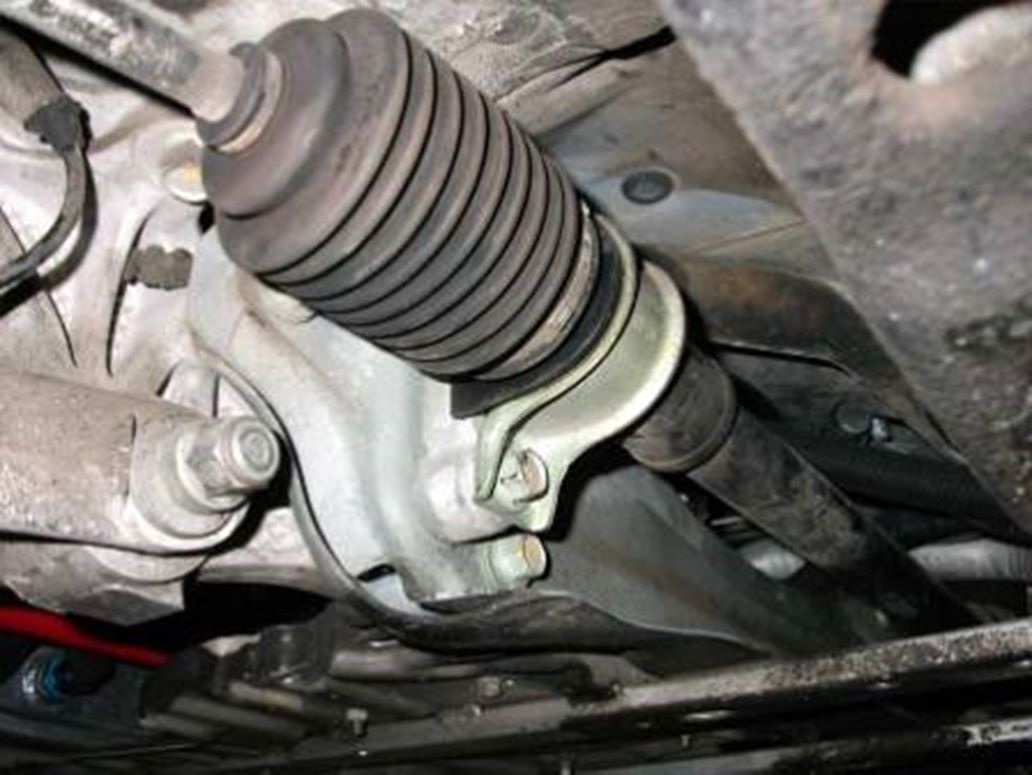Inspecting mounting bushings and brackets
Inspecting mounting bushings and brackets are performed when the driver complains of poor steering or knocking while driving or cornering. Rubber bushings and brackets hold the steering rack in a horizontal position relative to the vehicle body. When they loosen, the bar moves during steering, which leads to difficult and irregular operation of the steering system.
Inspecting mounting bushings and brackets
Over time during vehicle use, normal wear and tear occur on rack bushings that become pinched, brittle, or torn, while brackets can become damaged, worn, loose, or fall off.
If the vehicle is leaking engine oil or power steering fluid, it may be leaking onto the bushings. Oil and fluid lead to softening and deterioration of the bushing. Before replacing the sleeve, it is necessary to repair the leak from the engine or steering system.
Steering rack bushings and brackets
Raise the vehicle on a lift, keeping the weight of the vehicle on the wheels, if possible. First, a visual inspection of the bushings and brackets is performed for visible signs of any faults. Try moving the rack-and-pinion assembly up and down by hand. Any movement is observed.
Also, moving the steering wheel to one side or the other can cause rack-and-pinion bushings. The assistant rocks the steering wheel while the technician under the vehicle looks at the rack-and-pinion. If the movement is detected, first tighten the mounting bolts. If the rack still moves, it is necessary to replace the bushings and check the condition of the brackets.
To inspect mounting bushings and brackets, follow these steps:







